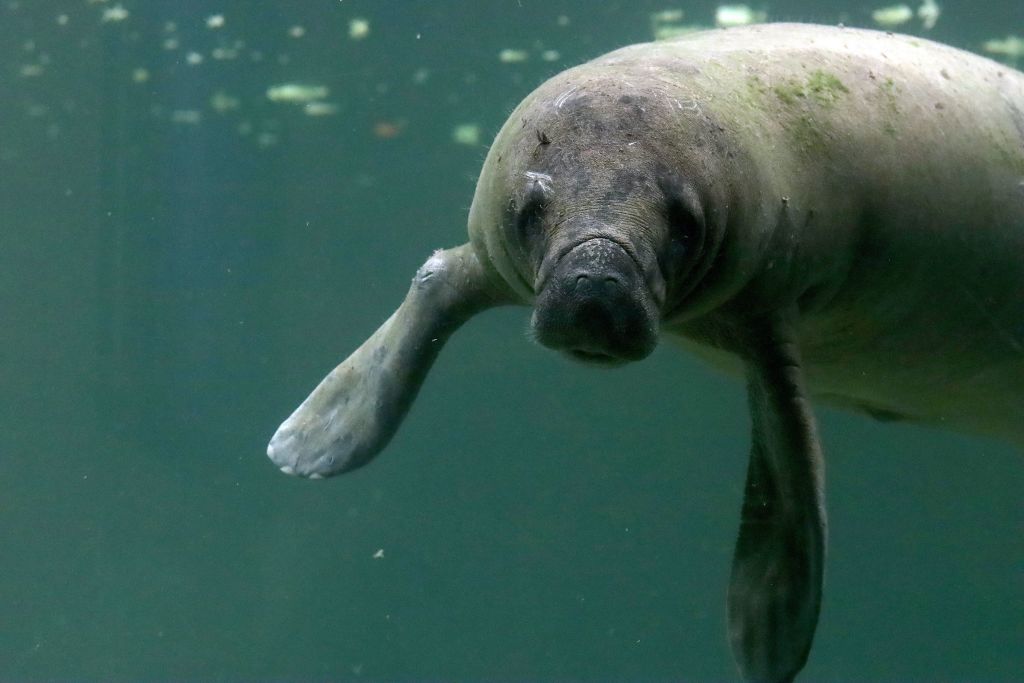
Photo by means of ULISES RUIZ/AFP by way of Getty Photography.
It’s a mad, mad, mad, mad world — and that goes for the animal occupants of our little blue marble spinning across the sun as so much as the human ones. Here’s a round up of one of the most most eldritch critter stories to wander thru our brief attention spans as of late:
We’re going to be “colonized” via large parachuting spiders, however don’t worry, they’re good (allegedly)
As if a worldwide pandemic and Putin’s obsession with rebuilding the united states weren’t sufficient to stress us all out, Axios had this nervousness-inducing headline on Wednesday: “Massive spiders anticipated to drop from sky throughout the East Coast this spring.”
Researchers on the College of Georgia announced that The us’s whole Jap Seaboard must are expecting swarms of Joro spiders, a species native to Japan, this spring. The eight-legged invaders were first noticed within the U.S. in 2013, principally in Georgia and other southeast states.
The spiders can face up to cold temperatures, so they could live to tell the tale as a long way north as D.C. or Delaware, one of the crucial UGA researchers said.
Joro spiders, Axios reassures us, are “innocuous to humans as their fangs are too small to break human skin.” Then again, the article additionally says that they are “the size of a kid’s hand” and go back and forth through “ballooning” in the wind by using their webs as “tiny, terrifying parachutes” — neither of which sounds very reassuring.
Oh, and they additionally most likely traveled throughout the ocean on transport containers, “just like the Bubonic plague” and are named for Jorōgumo, “a creature of Jap folklore that may shapeshift into a girl or spider earlier than killing its prey.”
In the event you’d like more information about our new insect overlords (including a photo from the UGA researchers of the longlegged aerial attacker that had darn smartly higher now not land on my head), read the article at Axios.
A park in Austin is struggling to navigate turf wars between hormonal peacocks
Mayfield Park, a metropolis-owned historic property in Austin, Tex., has been the house of a flock of peafowl (that’s the collective time period for both the feminine peahens and the male peacocks with the enduring stunningly-colored tail feathers) since the Nineteen Thirties, when the property’s unique owners received a pair of the birds as a Christmas present.
The park used to be donated to the city of Austin in 1971 and that authentic duo is now a flock of about two dozen that roam the grounds and enjoyment vacationers and locals alike.
However the peacockian idyll used to be disrupted lately, in step with Texas Month-to-month, when some unknown particular person dropped off three birds at the park, two adult males and one feminine.
The newcomers are “ruffling feathers,” says the file. Consistent with Blake Tollett, the president of Mayfield Park Community Mission, it’s just no longer that straightforward to get a bunch of those birds to get alongside — and the start of peacock mating season simply makes it so much more difficult:
[T]he two new men have been young and immature; they and the other newcomer generally stuck together and remoted from the rest of the flock. What’s extra, one of the most adult males used to be, in step with Tollett, “somewhat off.” He screeched often and “freaked out” one of the human guests…
It’s difficult to facilitate the adjustment of 1 peacock, let by myself three. The timing of their arrival, simply prior to mating season, makes this much more troublesome, for the reason that peacock hormones are already operating excessive. And unless now, the Mayfield flock had an excellent gender distribution: about ten males and ten ladies. That matters for the reason that newly arrived younger males are much more aggressive in their mating habits, this means that it’s imaginable they’ll displace their older counterparts and force them to leave the park…This shakes up your entire dynamic of mating season. For park visitors, it will imply listening to an uptick in ear-splitting screams from stressed-out peacocks…
Peacocks are notoriously loud, with a signature shriek not in contrast to that of an angry baby. All over mating season, they’re even louder.
Manatees headed to rehab
The Florida Legislative session is wrapping up its final days, and lawmakers are going via what’s colloquially referred to as the “sprinkle record” — a couple of million greenbacks of tax revenue they designate for particular initiatives on the finish of session. Like earmarks, however with a cuter name, we believe.
One of the vital gadgets on the House sprinkle checklist was once a $500,000 allocation for the Clearwater Marine Aquarium, for use for a brand new manatee rehabilitation showcase, in line with a document by way of Florida Politics.
It’s much-wanted toughen for the endangered aquatic mammals. After years of bettering their inhabitants numbers and total well being, Florida’s manatee inhabitants has been struggling, with greater than 1,000 manatees demise in 2021. That’s more than five instances the annual moderate, and lots of of these deaths were from starvation because of lost seagrasses, the primary manatee food plan staple.
Florida Politics’ Kelly Hayes describes the plans for the rehab facility and further funding from the federal executive and private donors:
Through pool renovations, the aquarium hopes to give a boost to capability with the Manatee Rescue and Rehabilitation Partnership (MRP) for the rehabilitation of West Indian manatees. In keeping with the request, cash will lend a hand beef up and expand existing services for clinical therapy, rehabilitation and/or necropsies, together with construct outs, differences, improvements and renovations that meet U.S. Department of Agriculture requirements for the care of manatees and different marine mammals. The center hopes so as to add 12 “beds” for manatees to get well ahead of going back out into the wild.
Consistent with the request, the federal govt has already assured $ninety four,000 to the undertaking, and $a hundred,000 will come from local sources. On the other hand, many of the funding — sixty eight.1% — will likely be provided via private donors, who’ve already guaranteed $6.8 million to the show off. The state’s contribution, if authorized, would account for 30% of the showcase’s funding. The state money could be disbursed through the Fish and Natural world Conservation Fee (FWC).
The submit Giant Parachuting Spiders, Peacock Turf Wars, and Manatees in Rehab: The Best of This Week’s Weird Critter Tales first regarded on Mediaite.



